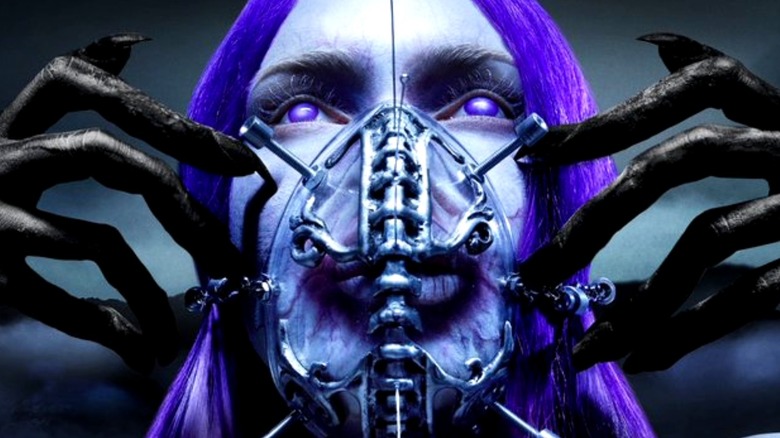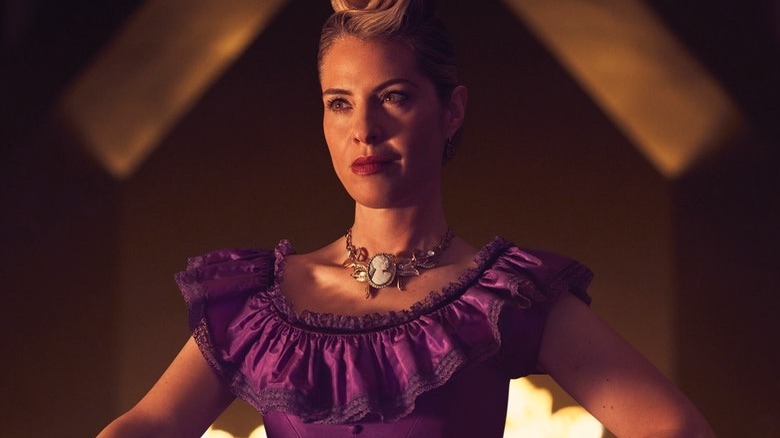The Purpose Of The Color Purple In American Horror Story: Apocalypse
Ryan Murphy clearly loves burying hidden meanings, references, and Easter eggs in every season of "American Horror Story." Over time, the connections built into each story of the anthology series have tied together across the decades of each horrifying and grisly tale. But there's been none more interconnected than "American Horror Story: Apocalypse," which imagined what would happen if the world was razed in a nuclear blast. But surprisingly, the witches from "Coven" made a reappearance in the plot to save the world.
It even tied into the events of the very first season "Murder House" thanks to Michael Langdon being born of the pure evil that resided in the building. But the deeper connections didn't stop there. For most of the season, the remaining survivors of the nuclear holocaust all hunkered underground in a grim existence. Sure, some of the richer survivors still retained a comfortable lifestyle in the post-apocalypse, but it wasn't that fun for everyone else.
Servants, staff, and guests
Based on their social status pre-apocalypse, the survivors were divided into three groups in the bunker. The rich elite treated the shelter like a fancy hotel, flitting about the place in purple finery while the Cooperative's staff dressed in black. Everyone else who happened to get in the bunker by pure chance wore gray and had to serve the rest of the outpost, like Coco St. Pierre Vanderbilt's hapless assistant, Mallory – played by Billie Lourd. Although obviously Mallory was eventually revealed to be under a spell to hide her status as a Witch from Michael and the rest of his demonic cohort.
But the purple clothes worn by the elite guests at the outpost had a deeper meaning than many expected. Traditionally, the color purple usually signifies royalty or is worn by someone of a higher social class (via Screen Rant). And since the outpost quickly established its own mini-social system, it's funny that "American Horror Story" showed how quickly the survivors clung to the social norms of their previous lives rather than treating everyone as an equal in a truly unprecedented situation.
To be fair, keeping a structure in place after an apocalyptic event would be a way of ensuring the survivors wouldn't simply go mad at the thought of everything they've lost. But it does seem a little unfair to everyone not handed an intricately detailed purple dress to wear. Then again, this is "American Horror Story," not "American Equality Story." Anyway, bring on Season 10.

